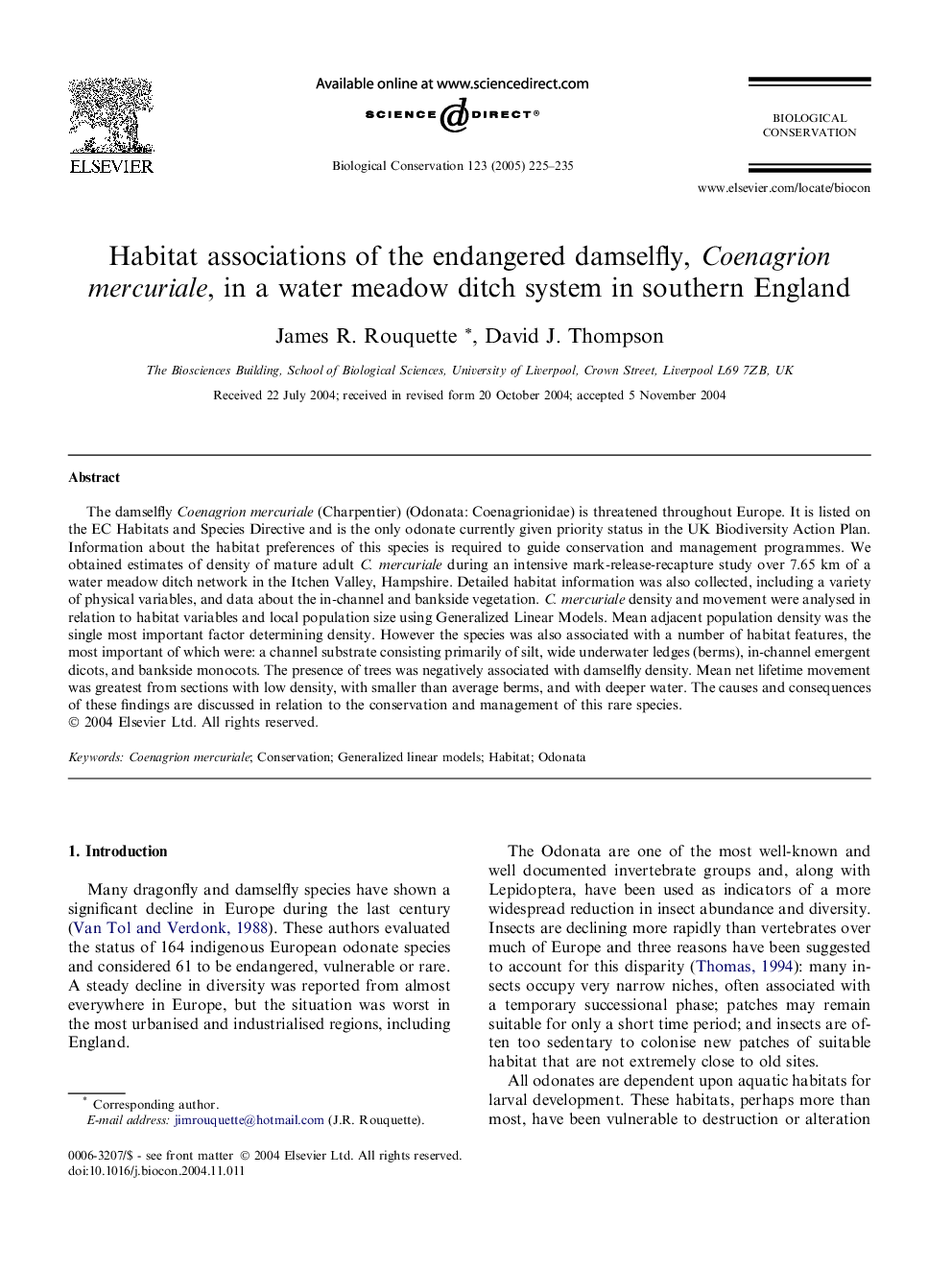| کد مقاله | کد نشریه | سال انتشار | مقاله انگلیسی | نسخه تمام متن |
|---|---|---|---|---|
| 9446203 | 1304654 | 2005 | 11 صفحه PDF | دانلود رایگان |
عنوان انگلیسی مقاله ISI
Habitat associations of the endangered damselfly, Coenagrion mercuriale, in a water meadow ditch system in southern England
دانلود مقاله + سفارش ترجمه
دانلود مقاله ISI انگلیسی
رایگان برای ایرانیان
کلمات کلیدی
موضوعات مرتبط
علوم زیستی و بیوفناوری
علوم کشاورزی و بیولوژیک
بوم شناسی، تکامل، رفتار و سامانه شناسی
پیش نمایش صفحه اول مقاله

چکیده انگلیسی
The damselfly Coenagrion mercuriale (Charpentier) (Odonata: Coenagrionidae) is threatened throughout Europe. It is listed on the EC Habitats and Species Directive and is the only odonate currently given priority status in the UK Biodiversity Action Plan. Information about the habitat preferences of this species is required to guide conservation and management programmes. We obtained estimates of density of mature adult C. mercuriale during an intensive mark-release-recapture study over 7.65 km of a water meadow ditch network in the Itchen Valley, Hampshire. Detailed habitat information was also collected, including a variety of physical variables, and data about the in-channel and bankside vegetation. C. mercuriale density and movement were analysed in relation to habitat variables and local population size using Generalized Linear Models. Mean adjacent population density was the single most important factor determining density. However the species was also associated with a number of habitat features, the most important of which were: a channel substrate consisting primarily of silt, wide underwater ledges (berms), in-channel emergent dicots, and bankside monocots. The presence of trees was negatively associated with damselfly density. Mean net lifetime movement was greatest from sections with low density, with smaller than average berms, and with deeper water. The causes and consequences of these findings are discussed in relation to the conservation and management of this rare species.
ناشر
Database: Elsevier - ScienceDirect (ساینس دایرکت)
Journal: Biological Conservation - Volume 123, Issue 2, May 2005, Pages 225-235
Journal: Biological Conservation - Volume 123, Issue 2, May 2005, Pages 225-235
نویسندگان
James R. Rouquette, David J. Thompson,